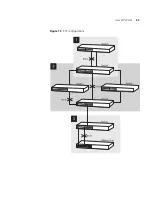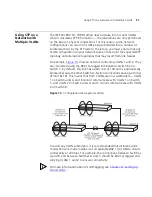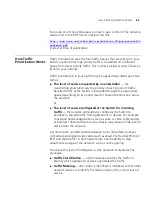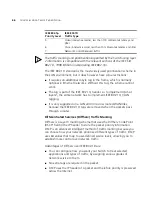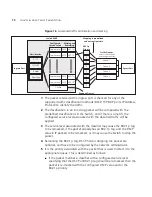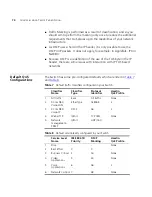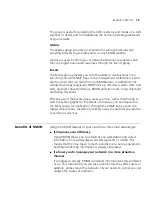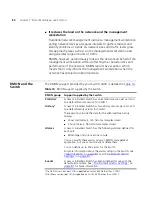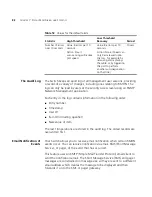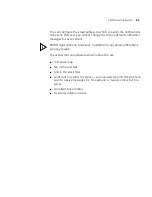
How Traffic Prioritization Works
69
Figure 15
shows how traffic prioritization works at layer 2. The Switch
will check a packet received at the ingress port for IEEE 802.1D traffic
classification, and then prioritize it based upon the IEEE 802.1p value
(service levels) in that tag. It is this 802.1p value that determines which
traffic queue the packet is mapped to.
Advanced Traffic Prioritization
Incoming traffic can be classified based on packet attributes at different
layers of the OSI 7 layer model. More importantly however, the network
administrator has more control and can define what service level to apply
to each classified traffic type, and therefore how it is treated by the
Switch once it has been identified.The Switch can look in the packet for
layer 2, 3 and 4 attributes to identify incoming traffic.
Most of the current applications, for example Microsoft Word, Lotus
Notes and NetMeeting, are not QoS-aware and do not apply a service
level to the traffic that they send. Being an intelligent Switch, your Switch
can use its own rules to classify and mark the traffic. If the incoming
traffic has pre-defined service level markings, however, the advanced
traffic prioritization of your Switch allows you to modify and assign the
appropriate DSCP and 802.1D service level markings to that incoming
traffic.
The advanced traffic prioritization in the Switch allows you to:
■
Classify traffic based on different packet attributes. The four common
methods of classification are DSCP, TCP/UDP ports, IP Address and
Protocol.
■
Mark traffic as it enters the Switch with the appropriate DSCP and
802.1D markings.
Figure 16
shows how traffic is treated using the advanced traffic
prioritization in the Switch.
The DSCP field in the IP packet header can be used to classify (identify)
traffic as well as carrying the priority markings, as shown in Figure 16.
Содержание 3C17205-US - Corp SUPERSTACK 3 SWITCH 4400...
Страница 8: ...GLOSSARY INDEX...
Страница 14: ...14...
Страница 26: ...26 CHAPTER 1 SWITCH FEATURES OVERVIEW...
Страница 44: ...44 CHAPTER 3 USING MULTICAST FILTERING...
Страница 55: ...How STP Works 55 Figure 13 STP configurations...
Страница 58: ...58 CHAPTER 4 USING RESILIENCE FEATURES...
Страница 84: ...84 CHAPTER 7 STATUS MONITORING AND STATISTICS...
Страница 92: ...92 CHAPTER 8 SETTING UP VIRTUAL LANS...
Страница 98: ...98 CHAPTER 9 USING WEBCACHE SUPPORT...
Страница 120: ...120 CHAPTER 12 POWER MANAGEMENT AND CONTROL...
Страница 122: ...122...
Страница 126: ...126 APPENDIX A CONFIGURATION RULES...
Страница 134: ...134 APPENDIX B NETWORK CONFIGURATION EXAMPLES...
Страница 150: ...150 GLOSSARY...

